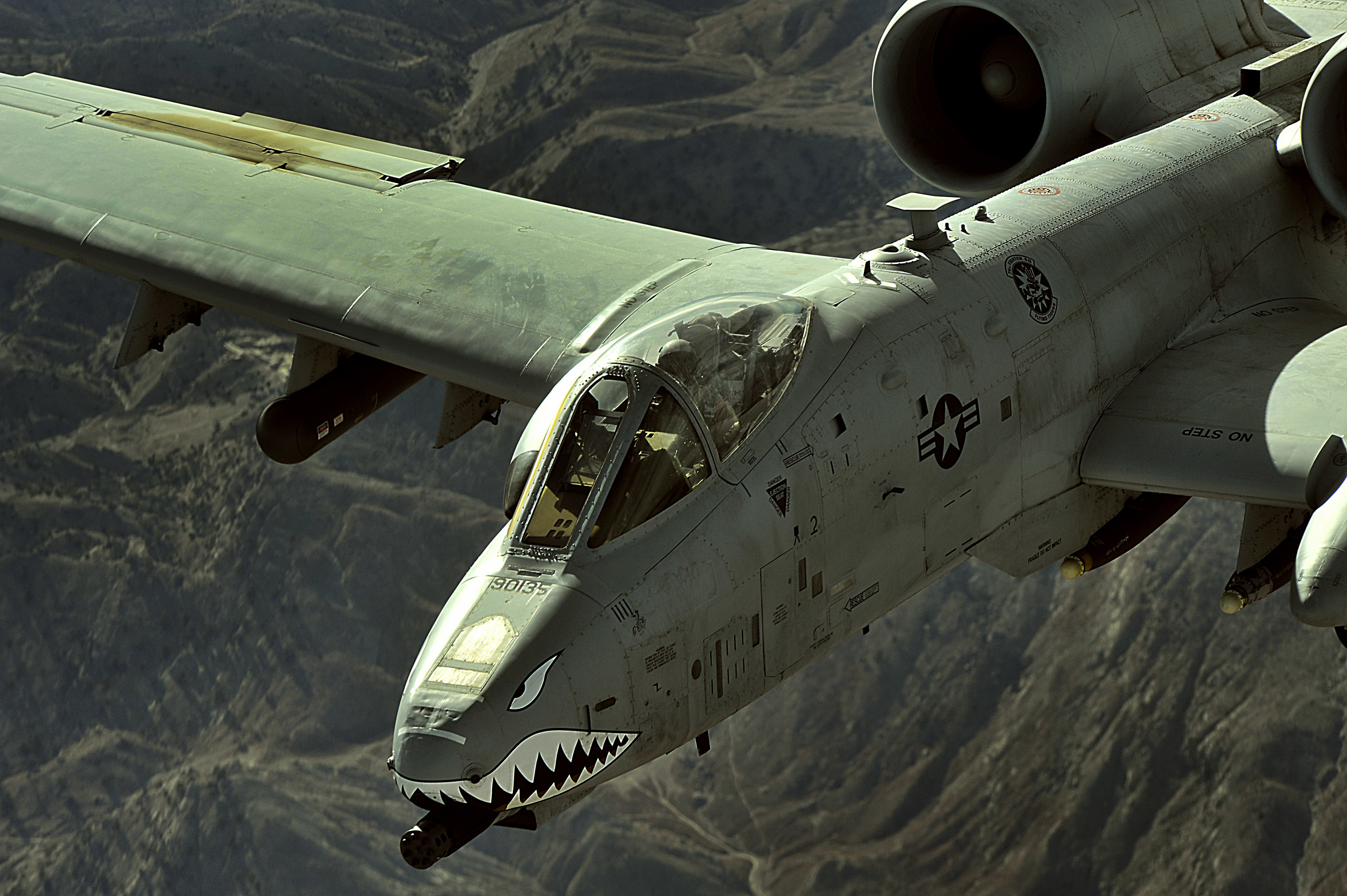

To keep the pilot safe while under fire, the A-10’s cockpit is encased within a 1,200-pound titanium “bathtub.” The A-10’s bathtub can withstand direct hits from 23mm cannon fire and indirect hits from 57mm shells. Several Innovative Design Features Help Ensure Survivability Most planes cannot fly while missing half of a wing. Several features lend to the A-10’s survivability: The hydraulic flight systems are double-redundant – and if the hydraulic systems fail, a mechanical system serves as an extra contingency the aircraft is also designed to stay airborne even if severely damaged, capable of flying with just one engine, one elevator, or with half of a tail or even half of a wing missing. To withstand the enemy contact that providing close air support entails, the A-10 is a physically hardened airframe, capable of surviving under direct fire. The Warthog was developed to provide close air support – emphasis on close, meaning the A-10 is often coming into contact with the enemy. Valencia/Released) The A-10 Warthog Withstands Time in Service

Air Force aircraft within Air Combat Command conducted joint aerial training that showcased the aircrafts tactical air and ground maneuvers, as well as its weapons capabilities. An A-10 Thunderbolt II flies over Grand Bay Bombing and Gunnery Range at Moody Air Force Base, Ga., Feb.


 0 kommentar(er)
0 kommentar(er)
